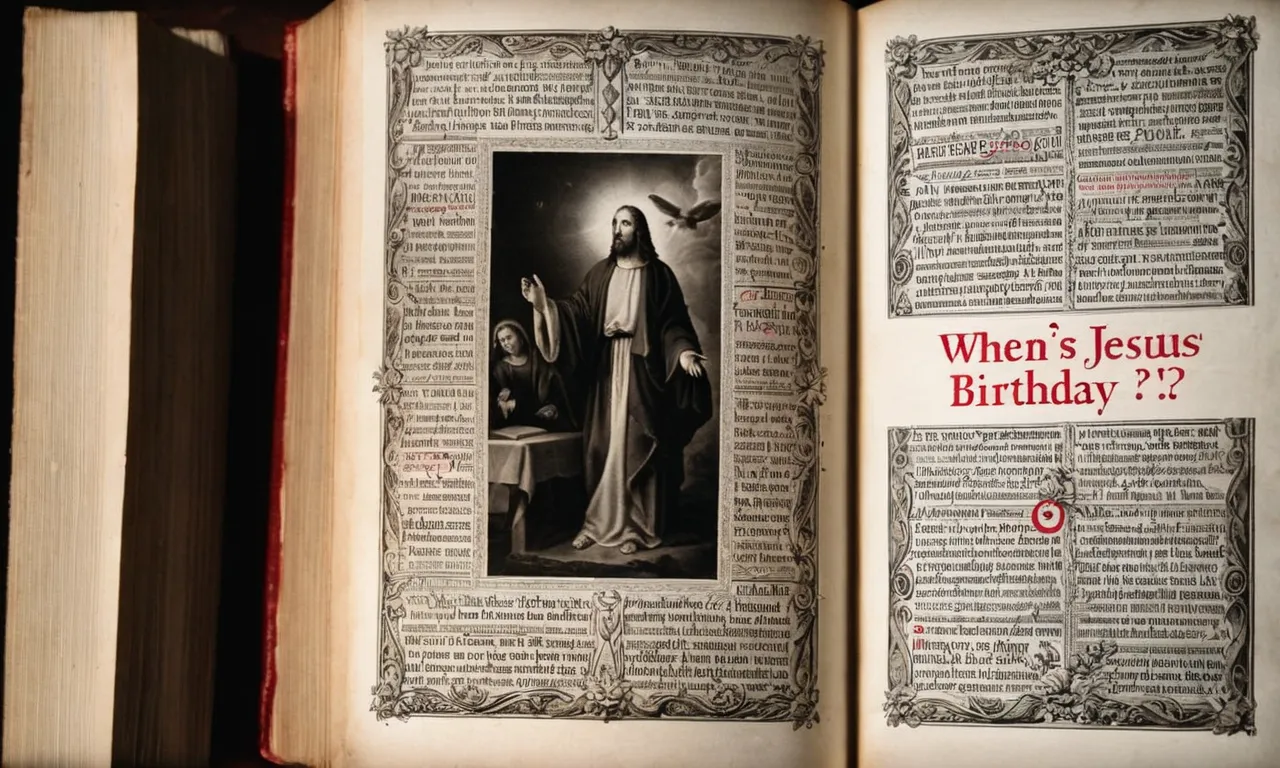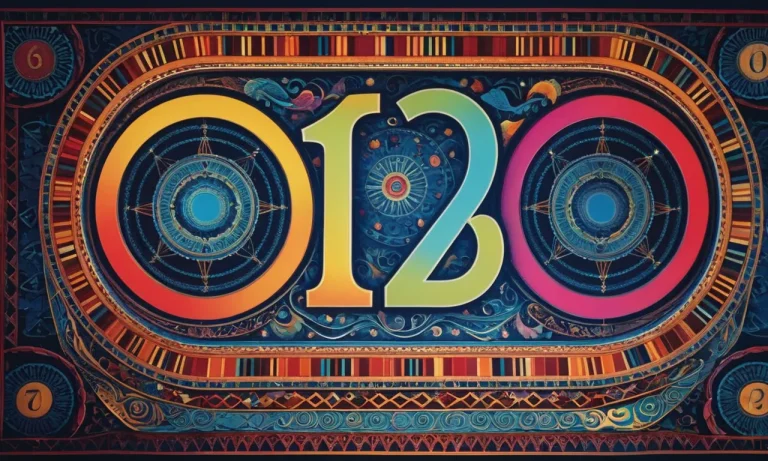When Is Jesus’S Birthday?
The exact date of Jesus’s birth has long been debated by theologians and historians alike. If you’re looking for a quick answer – most scholars agree that Jesus was likely born in the springtime, sometime between 6 and 4 BC.
In this comprehensive guide, we’ll dive deep into the evidence from the Bible and other historical sources to uncover the possible timing of this monumental event that shaped the course of human history.
The Gospels and the Nativity Narratives
Evidence from Matthew’s and Luke’s Accounts
The birth of Jesus is described in the Gospels of Matthew and Luke. Both accounts provide valuable information about when Jesus was born, but they differ in some key details. Matthew states that Jesus was born during the reign of King Herod the Great (Matthew 2:1).
Luke, however, says Jesus was born during a census conducted when Quirinius was governor of Syria (Luke 2:1-7). Linking these details to historical records can help narrow down when Jesus’s birth likely occurred.
Linking Jesus’s Birth to King Herod’s Death
King Herod ruled Judea from around 37 BCE to 4 BCE. Matthew links Jesus’s birth to Herod’s reign, so Jesus must have been born sometime before 4 BCE. However, the census mentioned by Luke did not occur until 6-7 CE, during Quirinius’s governorship. This gap of around ten years raises questions.
Scholars propose the census referred to by Luke may have been an earlier one, though clear evidence is lacking. Regardless, both Gospels connect Jesus’s birth to events that happened before 4 BCE.
Challenges in Aligning the Gospels
While Matthew and Luke provide insight into Jesus’s birth timeframe, aligning the details perfectly is challenging. Some key differences include:
- Matthew depicts the holy family living in Bethlehem, fleeing to Egypt, and later settling in Nazareth. Luke has them living in Nazareth, traveling to Bethlehem for the census, and returning home after Jesus’s birth.
- Only Matthew describes the visit of the Magi, while Luke alone tells of the shepherds visiting the manger.
- The genealogies of Jesus differ, though they agree he was descended from King David.
Scholars propose various explanations for these differences, but uncertainty remains. Despite the discrepancies, broad agreement exists Jesus was born before 4 BCE, providing an approximate timeframe. But the precise year and details continue to be studied and debated.
Clues from the Visit of the Magi
The Identity and Origins of the Magi
The Magi who visited Jesus after his birth are only mentioned briefly in the Gospel of Matthew. They were likely Zoroastrian astrologers and priests from Persia or regions farther East who studied the stars and lore passed down for generations to predict and interpret significant events.
Their long and arduous overland journey could have originated anywhere from 500 to 1,000 miles away. According to some accounts, they were from the region of Persia, Media, or Parthia. Their valuable gifts suggest these Magi held respected roles as advisors to nobility or kings in the East.
The Star That Guided Them
The Magi told King Herod they had seen a star signaling the birth of a new “King of the Jews” and came to worship him. There have been various theories about the nature of this guiding “star of Bethlehem”:
Regardless, Matthew indicates some sort of celestial sign convinced the Magi that a prophesied king was born in Judea. They undertook their difficult journey based on this sign appearing in the skies.
Herod’s Order to Kill Infants
According to Matthew 2:16-18, King Herod asked the Magi when the star signifying Jesus’s birth first appeared. When the Magi did not return with information about Jesus’s location, Herod furiously ordered the deaths of all male children under two years old in Bethlehem and vicinity.
While this slaughter is unverified in non-biblical sources, it would have been consistent with Herod’s notoriously jealous and cruel nature. He even had members of his own family killed when feeling threatened.
| Estimated total children killed* | 10-30 |
| Year range | 6 BC – 1 BC |
This order from Herod confirms that after their long journey, the Magi visited Jesus sometime within this two year period after his birth, providing clues about the potential years Jesus was born.
Insights from Ancient Calendars and Feasts
Links to Sukkot – The Feast of Tabernacles
Sukkot, also known as the Feast of Tabernacles or Feast of Booths, is a Jewish holiday that occurs in late September or early October. Many scholars believe there are intriguing links between Sukkot and the birth of Jesus.
Sukkot commemorates the 40 years that the Israelites wandered in the desert and lived in temporary shelters or booths after the exodus from Egypt. As a reminder of their journey, Jewish people build simple outdoor huts during Sukkot. The timing of Sukkot may signify when Jesus was born.
The Gospel of John states, “the Word became flesh and made his dwelling among us” (John 1:14). The Greek word for “dwelling” here is related to the word for tabernacle or booth. This could be a reference to the connections between Jesus and the Feast of Tabernacles.
Sukkot also celebrates the autumn harvest in Israel. At this time of year, shepherds would still be tending their flocks in the fields near Bethlehem. The angels announced the birth of Jesus to shepherds keeping watch over their sheep at night (Luke 2:8-15).
The cool autumn nights would also make it more comfortable for the crowds to travel to Bethlehem for the Roman census.
The Season of Shepherds in Bethlehem’s Fields
Many historians believe Jesus was born in the autumn rather than the dead of winter. The climate in Judea is cool and rainy from late October to early April. Although winters are mild, conditions could be harsh at times, especially at night.
Yet the Gospels mention the presence of shepherds tending their flocks in the fields near Bethlehem when Jesus was born. This implies a fall birthdate.
In late December, the winter rains and cold would have forced the shepherds to keep their flocks in shelters. But in October, shepherds could still be watching their flocks outside at night. Some records also indicate sheep around Bethlehem were typically bred in the spring.
This would enable them to give birth in the fall and early winter. Newborn lambs would need close tending in the fields during their first months.
Additional clues about the timing come from the earlier birth story of John the Baptist. The Gospel of Luke says John’s mother Elizabeth became pregnant 6 months before Mary. This implies John was born in early spring.
If Jesus was born 6 months after John, then a September or October date would fit the timeline. So the details in Scripture about shepherds and sheep point toward an autumn birthdate for Christ rather than mid-winter.
Early References in Roman and Christian Writings
The Archives of Rome and Early Church Fathers
The earliest references to the date of Jesus’s birth come from the archives of the Roman Empire and the writings of early Christian leaders known as the Church Fathers. These sources provide valuable insights into when the first Christmas celebrations occurred.
The Roman census records mention a decree by Caesar Augustus in 3 BC ordering a census that required Joseph to travel from Nazareth to Bethlehem, setting the stage for Jesus’s nativity there. The Roman historian Tacitus later recorded the crucifixion of Jesus during the reign of Tiberius around AD 27-29.
Using these dates, early Christian writers calculated Jesus’s year of birth to around 2-4 BC.
The earliest Christian writer to discuss Jesus’s birthday was Clement of Alexandria (c.150 – c. 215 AD). In his book Stromata, Clement provided possible dates of Jesus’s birth, including April 20/May 20, May 20/June 20, November 17/18, and January 6/10.
Other Church Fathers such as Irenaeus and Tertullian offered similar dates in the late 100s AD.
While the specific months and days differed, one common theme emerged – all dated Jesus’s birth to the winter or early spring. This corresponded to the shepherds watching their flocks by night and was consistent with biblical clues.
These early Christian writers laid the foundation for dating Jesus’s birth, which influenced later Christmas traditions.
When Was December 25th First Celebrated?
The earliest record of Jesus’s birth being celebrated on December 25th dates to 336 AD in Rome. A calendar from that year references a nativity feast on December 25 as an already established tradition.
Shortly after, in 350 AD, Pope Julius I officially declared December 25 as the date to celebrate Jesus’s birth.
Why December 25? Some scholars argue it was chosen to coincide with pagan winter solstice festivals like Saturnalia and Dies Natalis Solis Invicti (Birth of the Unconquered Sun) held on that date. By aligning with popular pagan celebrations, the Church may have hoped to impart Christian meanings while allowing converts to retain cherished traditions.
But others contend the December 25 date was independent of pagan feasts. The Church Father Hippolytus of Rome calculated Jesus’s birth as December 25 in 204 AD, well before the celebration was officially established.
Instead, December 25 was chosen based on another date linked to Christ – March 25, recognized in antiquity as the date of Jesus’s conception or incarnation. December 25 is exactly nine months after March 25, lending symbolic significance.
Regardless of motives, by the late 300s AD December 25 was firmly entrenched in the Roman church and spreading to other regions like Egypt. The December date for Christmas took hold over centuries and remains the most popular date for celebrating Jesus’s nativity today.
Conclusion
While an exact date may never be known, the wealth of evidence points to Jesus being born in the springtime between 6 and 4 BC – most likely in either March or April. The traditional date of December 25 emerged later in Christian history, but probably does not reflect Jesus’s actual birthday.
Yet while the date is still shrouded in some uncertainty, the miraculous events surrounding the Nativity remain central to Christian theology and a guiding light for over 2 billion followers worldwide even today.








